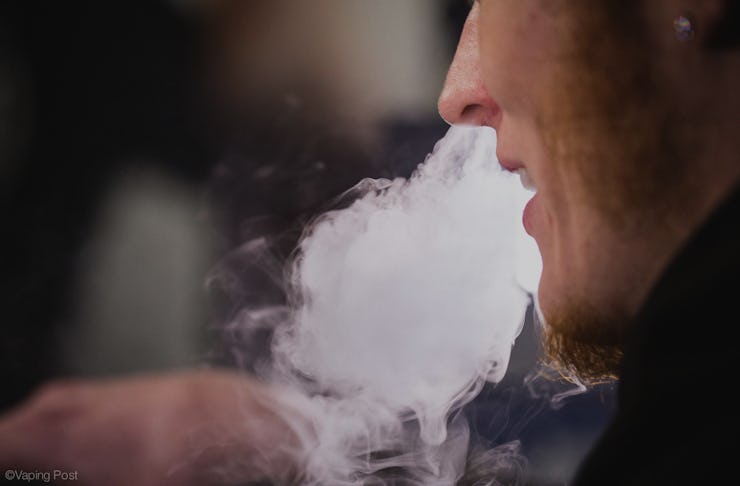Scientists Identify 3 Very Toxic Vape Juice Flavors
Unfortunately, they're pretty common.

Vapers have long claimed that using e-cigarettes is safer than smoking tobacco, and they’re right … mostly. Earlier in January, public health experts weighed in on the issue, saying that, while vaping is indeed safer than smoking, it can increase teens’ risk of smoking cigarettes.
But just because vaping is safer than smoking does not mean vaping is safe, note researchers in a new paper in Frontiers in Physiology. Flavored vape juice — whether it’s Unicorn Vomit, Slug Juice, or good old-fashioned crème brûlée — is full of natural and artificial chemicals that impart its flavor. Some vapers even use zero-nicotine vape juice just to blow sick clouds of sickly sweet vapor, but that doesn’t guarantee that it’s safe.
Relative risk is not the same thing as the absolute risk, the team of University of Rochester Medical Center researchers point out in their study, where they highlight exactly how some components of nicotine-free vape juice could be harmful to users’ health. In the study, they examined the effects of seven common flavorings on human cells to figure out just how the human body reacts, on a cellular level, to vaping.
That face when they say vaping might not be good for you.
They tested these chemicals on monocytes — a type of white blood cell — and found that all of them produced biomarkers that indicate tissue damage and inflammation, suggesting that the chemicals cause oxidative stress.
Perhaps most notably, they found that three of the flavoring chemicals — cinnamaldehyde, o-vanillin and pentanedione — all caused cytotoxicity or cell death in the experiment. These chemicals give cinnnamon, vanilla, and creamy or buttery flavor, respectively. So, if you like vape juice that tastes like Cinnamon Toast Crunch, popcorn, or crème brûlée, take note of these findings.
They also showed that damage is greater when multiple flavors of liquid are mixed together. Most vape juice flavors are created by doing so.
“Our data indicate that tighter regulations are necessary to reduce the risk of inhalation toxicity due to exposure to e-liquids without nicotine and flavoring chemicals,” the authors write.
Does this mean you need to put down the vape? Well, if you’re using it to quit smoking cigarettes, you’re in better shape, but you should know exactly what’s going on when you put these chemicals into your body.
Abstract: Background: The respiratory health effects of inhalation exposure to e-cigarette flavoring chemicals are not well understood. We focused our study on the immuno-toxicological and the oxidative stress effects by these e-cigarette flavoring chemicals on two types of human monocytic cell lines, Mono Mac 6 (MM6) and U937. The potential to cause oxidative stress by these flavoring chemicals was assessed by measuring the production of reactive oxygen species (ROS). We hypothesized that the flavoring chemicals used in e-juices/e-liquids induce an inflammatory response, cellular toxicity, and ROS production.
Correction 2/20/2018: The original header art in this article displayed a brand of e-liquid that does not contain the ingredients discussed in this study. The image has been changed so as not to give a misleading impression of that particular brand.